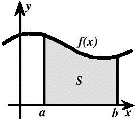Math in the Middle Institute Partnership

Department of Mathematics: Master of Arts in Teaching, Exam Expository Papers
Date of this Version
7-2007
Abstract
Who was Pythagoras after which the Pythagorean Theorem is named? Pythagoras was born between 580-572 BC and died between 500-490 BC. Pythagoras and his students believed that everything was related to mathematics and that numbers were the ultimate reality. Very little is known about Pythagoras because none of his writings have survived. Many of his accomplishments may actually have been the work of his colleagues and students. Pythagoras established a secret cult called the Pythagoreans. His cult was open to both females and males and they lived a structured life consisting of religious teaching, common meals, exercise, reading and philosophical study. The Pythagorean Theorem for which Pythagoras is given credit states: In a right triangle the square of the length of the hypotenuse is equal to the sum of the squares of the lengths of the legs. There is no evidence that Pythagoras himself worked on or proved this theorem, rather the earliest mention of his name with the theorem occurred five centuries after his death. Other accomplishments attributed to Pythagoras are include a system of analyzing music based on proportional intervals of one through four, the number system based on ten, the identification of square numbers and square roots, knowledge that the earth is round, and that all planets have an orbit that travels around one central point.


Comments
In partial fulfillment of the requirements for the Master of Arts in Teaching with a Specialization in the Teaching of Middle Level Mathematics in the Department of Mathematics. Jim Lewis, Advisor July 2007